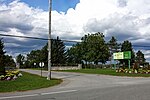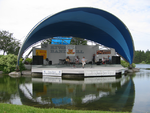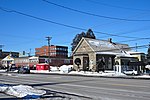NDHQ Carling

National Defence Headquarters Carling, or NDHQ Carling (originally Carling Campus), is a 148.79-hectare (367.7-acre) site containing federal government buildings near the Crystal Bay area in the west end of Ottawa, Ontario, Canada. The campus, located at the intersection of Carling Avenue and Moodie Drive, consists of 11 interconnected buildings with a total of 207,000 square metres (2,230,000 sq ft) of space.The property was acquired by Public Works and Government Services Canada from its original tenant, Nortel, in December 2010, and now houses National Defence Headquarters.During Nortel's peak period throughout the 1990s, the research and development conducted at the Nortel's Carling Campus was a catalyst for numerous high-tech spin-off and support companies in Ottawa. This development began changing Ottawa's reputation as a government city and the campus even came to represent the city's aspirations of becoming a technology hotbed like Silicon Valley.
Excerpt from the Wikipedia article NDHQ Carling (License: CC BY-SA 3.0, Authors, Images).NDHQ Carling
Carling Avenue, Ottawa Nepean
Geographical coordinates (GPS) Address Nearby Places Show on map
Geographical coordinates (GPS)
| Latitude | Longitude |
|---|---|
| N 45.35 ° | E -75.85 ° |
Address
National Defence Headquarters (Carling)
Carling Avenue 3500
K2H 8G1 Ottawa, Nepean
Ontario, Canada
Open on Google Maps






